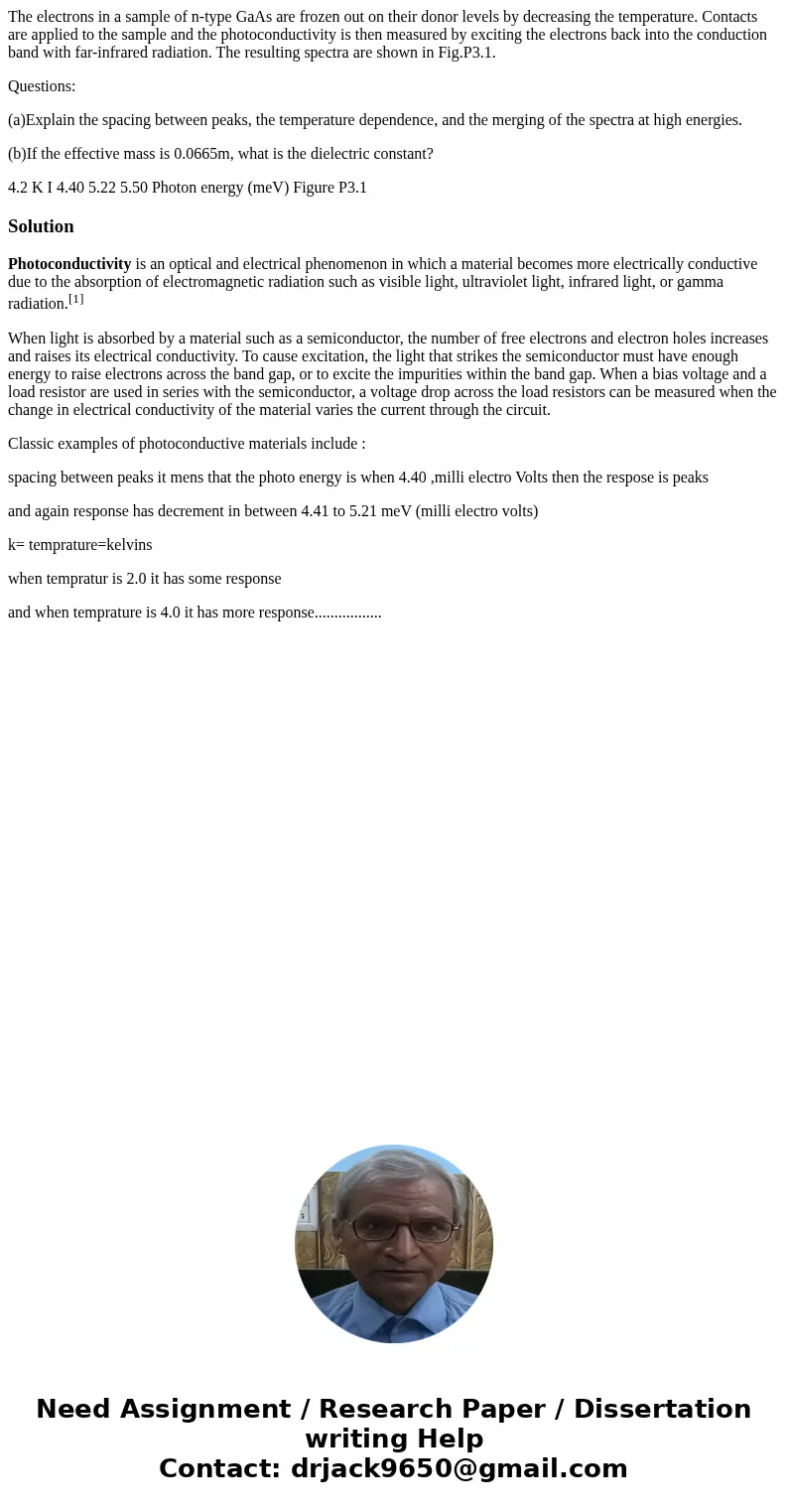The electrons in a sample of ntype GaAs are frozen out on th
The electrons in a sample of n-type GaAs are frozen out on their donor levels by decreasing the temperature. Contacts are applied to the sample and the photoconductivity is then measured by exciting the electrons back into the conduction band with far-infrared radiation. The resulting spectra are shown in Fig.P3.1.
Questions:
(a)Explain the spacing between peaks, the temperature dependence, and the merging of the spectra at high energies.
(b)If the effective mass is 0.0665m, what is the dielectric constant?
4.2 K I 4.40 5.22 5.50 Photon energy (meV) Figure P3.1Solution
Photoconductivity is an optical and electrical phenomenon in which a material becomes more electrically conductive due to the absorption of electromagnetic radiation such as visible light, ultraviolet light, infrared light, or gamma radiation.[1]
When light is absorbed by a material such as a semiconductor, the number of free electrons and electron holes increases and raises its electrical conductivity. To cause excitation, the light that strikes the semiconductor must have enough energy to raise electrons across the band gap, or to excite the impurities within the band gap. When a bias voltage and a load resistor are used in series with the semiconductor, a voltage drop across the load resistors can be measured when the change in electrical conductivity of the material varies the current through the circuit.
Classic examples of photoconductive materials include :
spacing between peaks it mens that the photo energy is when 4.40 ,milli electro Volts then the respose is peaks
and again response has decrement in between 4.41 to 5.21 meV (milli electro volts)
k= temprature=kelvins
when tempratur is 2.0 it has some response
and when temprature is 4.0 it has more response.................

 Homework Sourse
Homework Sourse